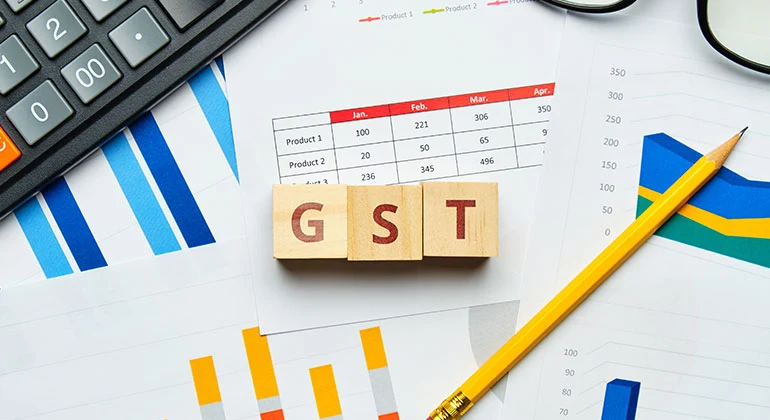Compliance
GST APIs – they can transform how you have been doing business!

GST is not just another type of tax collection.
Yes, you read it right. GST is way more than what you’ve thought. It isn’t merely a type of indirect tax collection. Instead, GST is the most advanced, progressive tax reform ever implemented in India.
GST can change how you interact with your vendors and customers, transform the mechanism of vendor assessment before onboarding them, and revamp the entire landscape to put you in firm control of the things.
For the first time, the Government has invested extensively in creating a robust IT system that supports the entire GST framework.
GST system runs on G2B (Government to Business) portal i.e. all businesses can access the Government portal (www.gst.gov.in) to carry out various tasks related to GST.
However, you can choose to carry out those tasks through third party applications as well which can be accessed on a desktop or a mobile.
Not just the usual return filing process, these applications are mastered to pull out requisite data from the portal, convert the numbers into action-oriented metrics, and provide valuable insights for key decision making.
How do these applications pull out the data from the Government Portal?
Via secured GST APIs. The Government has empowered the GST Suvidha Providers (GSPs) to use APIs in developing the applications and provide easy-to-access interface to the taxpayers as well as tax consultants. These APIs can be used for various compliance and analysis related tasks.
What are the technical specifications of GST APIs?
The GST APIs are RESTful, JSON-based and stateless. The production API endpoints can only be consumed via MPLS lines. All APIs have to accessed over HTTPS protocol. They can easily be integrated with ERPs and accounting systems for day-to-day bookkeeping.
What can the GST APIs be used for?
GST APIs can be used for carrying out numerous tasks such as –
- Filing of GST returns (GSTR 1, 3B, 9 etc) and Applying for new registration, amending or cancelling an existing registration ;
- Verifying details of a GSTIN as registered on the GST portal;
- Checking status (active/ cancelled) of a GSTIN as per the GST portal;
- Fetching status of returns filed against a GSTIN along with the date and ARN;
- Checking and downloading challans and payment receipts;
- Checking ITC, Cash, Liability ledger balances.
Not this, GST APIs can be used for calculating various parameters and key performance indicators by pulling data from www.gst.gov.in.
Use cases
Calculate and analyse GST compliance score
Check the vendors’ GST compliance score before onboarding them to avoid any future losses or financial implications.
At a single click, you can see those instances where they have delayed in filing GSTR-1 or GSTR-3B over the pre-selected period.
Based on the delays (including number of days in delay every time), get a GST compliance score and improve your decision making.
It’s simple and quick – Enter the GSTN and get a detailed report of delays and the overall score.
Analyse the sales and turnover ratios
At the time of granting loans to SMEs and other businesses, banks and financers ask for GST returns to analyse the turnover, B2B transactions and other key figures of a business.
Through GSTR 3B and GSTR 1 API (after due authentication from the taxpayer), the banks or the financers can view all the GSTR 3B and GSTR 1 returns filed for a particular period. They can also check GSTR 9C and GSTR 9 API to analyse the differences between GST returns and accounting books.
It can help a bank immensely in making its verification process robust, and expedite the loan approval process, thereby also eliminating any chances of fraud/ errors.
Pre-Boarding compliance assessment by e-commerce players
Many businesses buy their merchandise or some specific commodities through Amazon and other e-commerce operators for resale. In such a situation, the vendors mention their GSTIN so that they can avail ITC of the goods purchased.
However, if the seller doesn’t include the invoice in his GST return/ doesn’t file the return at all, the buyers suffer on ITC amount.
To safeguard its businesses, Amazon and other e-commerce operators can get GSTR 2A API which allows Amazon to check all the B2B transactions and ensure that the sellers file their returns timely and correctly so that all the buyers can avail their share of input tax credit.
Verification of Registrant’s Details
Zomato, MakeMyTrip, Swiggy, Oyo and all other aggregators allow the businesses to register on their website/ app so that people can view, interact and buy a required product/ service.
During the registration process, the businesses are asked to enter their GST Numbers and other information for tax compliance purposes.
However, these aggregators have to manually cross verify every detail at a later stage which is a time consuming and expensive process.
With the help of GSTIN Verification API, the websites/ apps can cross-examine all the details and also look out for cancelled/ fake GSTINs. Also, in case if a detail mismatches, the business can be asked to re-check, edit and correct the error to proceed further.
In a nutshell, APIs can reduce redundant, time-consuming tasks and make the GST compliance more productive.
Vayana has been authorised to connect to the GSTN using published APIs and is one of the leading GSP today in India, working with 100 plus ASPs and 1000 plus corporates as their preferred API provider/GSP for connecting to GSTN and NIC for various use cases in the bucket of GST, E-Way Bill and E-Invoicing.
We support efficient integration with all ERPs and accounting software at competitive pricing structure and robust data security.







